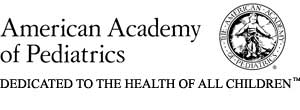When to Suspect an Allergy
Some allergies are easy to identify by the pattern of symptoms that
invariably follows exposure to a particular substance. But others are more
subtle, and may masquerade as other conditions. Here are some common clues
that could lead you to suspect your child may have an allergy:
- Patches of bumps or itchy, red skin that "weeps" or oozes clear fluid,
and forms a crust.
- Development of hives, intensely itchy skin eruptions that usually last
for a few hours and move from one part of the body to another.
- Repeated or chronic coldlike symptoms — that last more than a week or
two, or develop at about the same time every year. These could include a
runny nose, nasal stuffiness, sneezing and throat clearing.
- Nose rubbing, sniffling, snorting, sneezing and itchy, runny eyes.
- Itching or tingling sensations in the mouth and throat. Itchiness is not
usually a complaint with a cold, but it is the hallmark of an allergy
problem.
- Coughing, wheezing, difficulty breathing, and other respiratory
symptoms.
- Unexplained bouts of diarrhea, abdominal cramps, and other intestinal
symptoms.
How to Manage Hay Fever
Many children are allergic to pollens and molds, both of which are found
everywhere outdoors and cannot be completely avoided.
- Exposure to plant allergens can be minimized by keeping your child
indoors on days with high pollen and/or mold counts. It's helpful to use air
conditioners, where possible, to reduce exposure to pollen in both your home
and your car.
- Dust mites congregate where food for them is plentiful. They are
especially numerous in upholstered furniture, bedding and rugs. Choose
blankets and pillows made of synthetic materials. Padded furnishings such as
mattresses, box springs, pillows and cushions should be encased in
allergen-proof, zip-up covers which are available through catalogs and
specialized retailers. Wash linens weekly, and other bedding such as
blankets, every 2 to 3 weeks in hot water, then put them through the hottest
cycle of a clothes dryer. Pillows should be replaced every two to three
years.
Common Allergens on the Home Front
- Dust (contains dust mites and finely ground particles from other
allergens such as pollen, mold and animal dander)
- Pollen (trees, grasses, weeds)
- Fungi (including molds too small to be seen with the naked eye)
- Furry animals (cats, dogs, guinea pigs, gerbils, rabbits, and other
pets)
- Clothing and toys made, trimmed, or stuffed with animal hair
- Latex (household articles such as rubber gloves, toys, balloons, elastic
in socks, underwear, and other clothing, airborne particles)
- Seed dusts (beanbag toys and cushions)
- Bacterial enzymes (used to manufacture enzyme bleaches and cleaning
products)
- Foods such as cow's milk, eggs, peanuts, tree nuts, soy, wheat and
gluten, and corn
- Airborne dust from grain elevators, barns and haylofts (in rural areas)
Medications to Suppress Symptoms
Your child's allergy treatment should start with your pediatrician, who may
refer you to a pediatric allergy specialist for additional evaluations and
treatments.
- Antihistamines — Dampen the allergic reaction.
- Decongestants — Cover the range of symptoms.
- Corticosteroids — Highly effective for allergy treatment and are widely
used to stop symptoms.
- Allergy Immunotherapy — Immunotherapy, or allergy shots, may be
recommended to reduce your child's sensitivity to airborne allergens. Not
every allergy problem can or needs to be treated with allergy shots, but
treatment of respiratory allergies to pollen, dust mites, and outdoor molds
is often successful.
Common Triggers of Asthma
- Allergies — Molds Pollen Dust Mites Cockroaches Animals (especially cats
and dogs)
- Tobacco Smoke
- Infections — Viral respiratory infections, including colds Sinus
Infections
- Outdoor Air Pollution
- Indoor Air Pollution
- Aerosol sprays
- Cooking Fumes
- Odors
- Smoke (wood fires, wood-burning stoves)
Managing Eczema
- Food allergies play also play a role in about 25 percent of cases of
eczema in young children.
- Antihistamine medication may be prescribed to relieve the itching, and
help break the itch-scratch cycle.
- Long-sleeved sleepwear may also help prevent nighttime scratching.
- As long as steroid creams are used sparingly, at the lowest strength
that does the job, steroid creams are very safe and effective.
- A cortisone medication may be prescribed to reduce inflammation.
- Soaps containing perfumes and deodorants may be too harsh for children's
sensitive skin. Use laundry products that are free of dyes and perfumes and
double-rinse clothes, towels and bedding.
- Warm (never hot) showers may be preferable to baths. Gently pat your
child dry after the shower or bath to avoid irritating the skin with
rubbing.
- Launder new clothes thoroughly before your child wears them.

